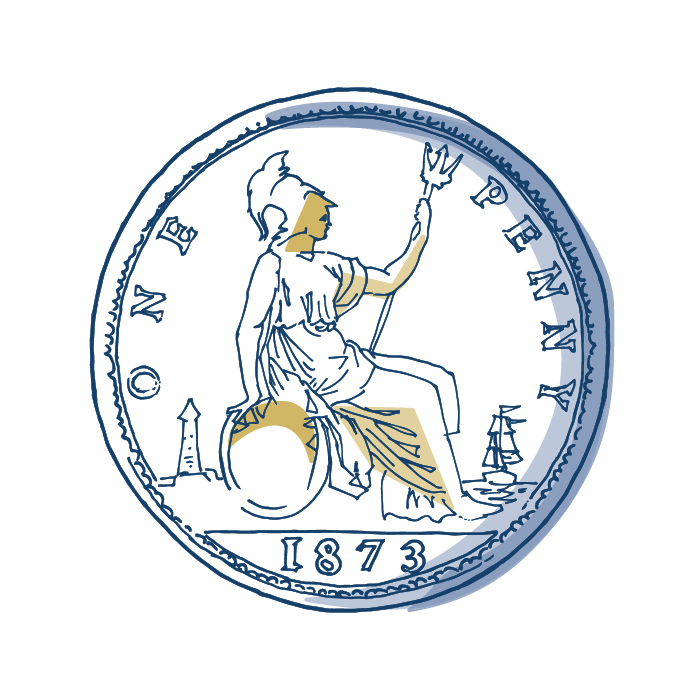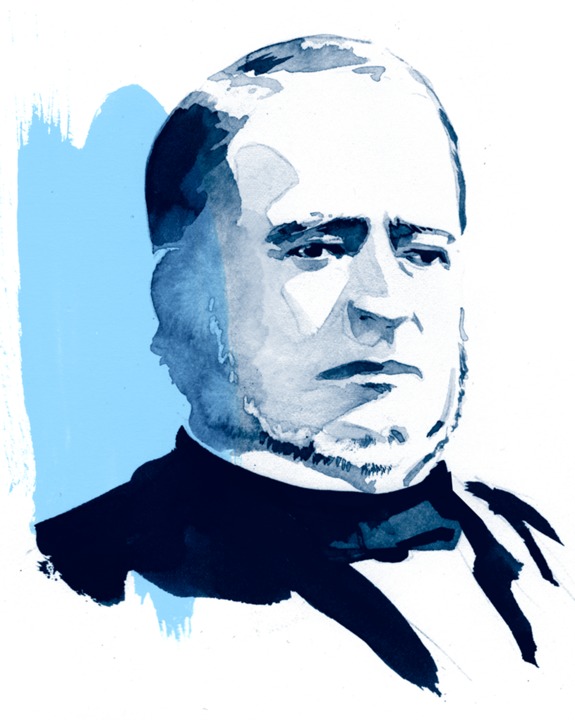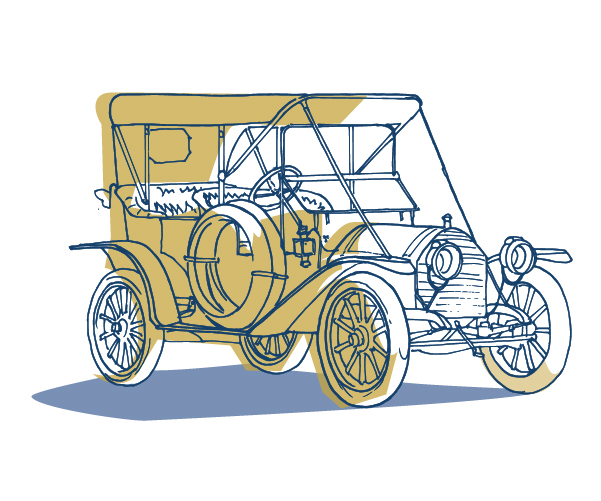Social advance depends quite as much upon an increase in moral sensibility as it does upon a sense of duty...
Jane Addams, Twenty Years at Hull‑House
1869
Crédit Mobilier
The Firm represents Union Pacific Railroad in the Crédit Mobilier scandal, in which stockholders siphoned profits from construction of the transcontinental railroad—a scandal that implicated many of the most powerful figures in U.S. Government at the time.
1873

A Reset of International Banking
Hundreds of thousands of dollars are stolen from the Bank of England in an elaborate forgery involving a police cover-up in the United States. The Firm assists in the recovery of the stolen money.
1878
Blatchford in the Public Sphere
Samuel Blatchford is appointed to the Second Circuit Court of Appeals.
1880
A Wall Street Legend
The Firm begins its representation of Kuhn Loeb & Co., one of the principal financiers of America’s early industrial companies. The relationship continues through its merger with Lehman Brothers in 1977.
1880
Railroad Reorganization
Several of the largest U.S. railroad players—Baltimore & Ohio, Missouri Pacific and Union Pacific, to name a few—reorganize in the 1880s and 1890s. The Firm guides these players, aiding their contributions to westward expansion of the United States.
1880
Express v. Railroads
Wells Fargo is involved in a dispute between express companies and the railroads, a case that goes all the way to the Supreme Court. The Firm represents Wells Fargo.
1882

Samuel Blatchford
Partner Appointed to Supreme Court
Samuel Blatchford is appointed to the U.S. Supreme Court. During his tenure, he writes 430 opinions and two dissents.
Samuel Blatchford
Justice and Scholar
Samuel Blatchford followed in his father’s footsteps at the Firm, becoming the second Presiding Partner in 1854. He continued the family legacy of civil service, legal scholarship and moral integrity in his public career thereafter. He would become the first person to be confirmed to all three levels of the federal judiciary—District, Circuit and Supreme Court. He served as an Associate Justice from 1882 until his death in 1893.
1880s
War of the Currents
In the 1880s, Nikola Tesla and George Westinghouse, represented by a recent Columbia law school graduate named Paul Cravath, battle Thomas Edison in the “war of the currents” to decide whether Edison’s direct-current power was cheaper and safer than Tesla’s and Westinghouse’s alternating-current power. Cravath would go on to join the Firm in 1899.
1886
Edison’s Triumph
On another front of the “war of the currents,” Thomas Edison is in litigation to defend his light filament and other patents. The issue goes all the way to the Supreme Court, where Edison eventually prevails. Clarence Seward, then the Firm’s Presiding Partner, represents Edison.
1890
The Firm begins a 100+ year relationship with Price Waterhouse & Co., now PricewaterhouseCoopers.
1890s
The Atchison, Topeka & Santa Fe
The Firm reorganizes the famed Atchison, Topeka & Santa Fe Railway, which fell into receivership following the Depression of 1893.
1899
The Cravath Era
Paul Cravath joins the Firm, and the Firm name becomes Guthrie, Cravath & Henderson in 1901.

Paul Cravath
Paul Cravath
Innovator and Philanthropist
Paul Cravath lent his name to the Firm, and left an indelible mark on the American legal profession. As the 20th century dawned, he created the model for recruiting and developing talent and incentivizing collaboration that became known as the “Cravath System.” It was adopted by professional services firms ranging from law to banking to consulting—by companies that would build enduring brands based on human capital—as the model for perpetuating quality and consistency across a platform and over generations. A noted patron of the arts, Cravath was also a philanthropist with a particular interest in education. He grew up on the grounds of Fisk University, one of the nation’s historically black colleges. Cravath’s father, Erastus Milo Cravath, a devoted abolitionist who used his home as a station on the Underground Railroad, co-founded Fisk shortly after the end of the Civil War and served as its president for 20 years. Sharing his father’s passion for the mission of the school, Cravath served for 45 years in various leadership roles as a University Trustee. He was also a leading commentator on the issues of his day, and a central figure in the movement to oppose an isolationist foreign policy in favor of an internationalist approach focused on the formation of alliances. To this end, he was a founder of the Council on Foreign Relations.
1895
Income Tax
Before the adoption of the 16th Amendment, the Firm argues and wins in the Supreme Court that the federal income tax law is unconstitutional.
1906
Paul Cravath becomes Presiding Partner, serving in the role until 1940.
1897
William Guthrie becomes Presiding Partner, serving in the role until 1906.
1907
After the Panic
The Firm reorganizes Westinghouse Electric Corporation after the Panic of 1907. Cravath continues to advise it through the 1990s, including in a series of transactions that transformed it from an industrial giant to a media company.
1912

Expansion of a Global Energy Player
Royal Dutch/Shell, advised by the Firm, executes its first acquisitions of oil properties in the United States and Mexico, and Cravath also advises on subsequent legal issues arising from the Mexican revolution. Cravath continues to represent Royal Dutch Shell, now one of the largest energy companies in the world.
1900

Building
a Skyline
William Guthrie and Paul De Fere convince J.P. Morgan’s Charles Steele, a former partner, to stick with a merger of bridge companies after the deal was nearly dead. The Firm then advises on the formation of the American Bridge Company, which consolidates 28 companies and goes on to build the Chrysler, Woolworth and Empire State buildings and the Verrazzano-Narrows Bridge, among other iconic structures.
1910

The Metropolitan Opera
Paul Cravath represents the Metropolitan Opera in acquiring Oscar Hammerstein’s opera interests.
1914
Life in the City
T.A. Gillespie Company changes how street cleaning and garbage collection are conducted in New York City. Cravath represents T.A. Gillespie.
1910

Saving the Auto Industry
Cravath handles the financing to rescue a nearly insolvent GM, owner of Buick, Cadillac, Oakland and Oldsmobile, and later advises Fisher Body in its merger with GM.
1918
World War I
Paul Cravath becomes counsel for the Inter-Allied Purchases Commission during World War I.
“From that moment in the autumn of 1918 the understanding between the United States of America and the British and French was built up—cooperation began. It began because this great lawyer and perfectly devoted patriot understood how to deal with men.”
Russell C. Leffingwell